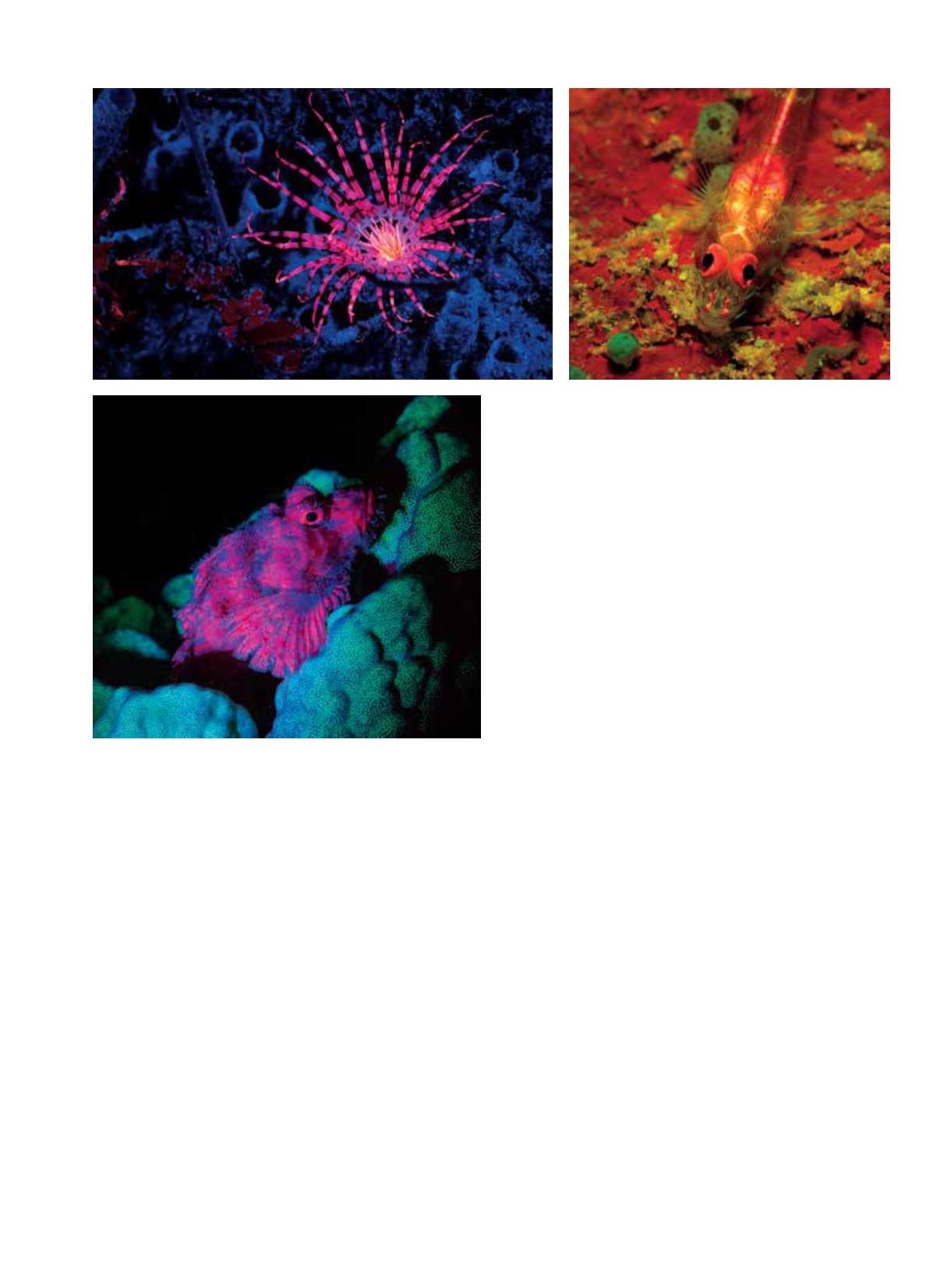
The wavelength of light used in most fluo torches
is a narrow band of blue, somewhere between 440-
480 nanometers (depending on the manufacturer).
Fluo diving differs from ultraviolet (black-light) diving
because UV light is in the sub-400nm range. Some
companies produce UV torches for underwater use
because invisible UV excitation light has the advantage
of requiring no additional filters, but researchers have
also discovered that blue light is more efficient in
stimulating green fluorescent protein (GFP) and its
mutations, which emit colors other than green.
Blue light is so effective because (as we all know from
our beginner open-water course) it is the only light
available at depths beyond about 30 feet, which means
that this is the light in which organisms such as coral
have evolved over the eons. Most UV light from the sun
bounces off the surface of the water, and the light that
penetrates makes it only a few inches, rendering UV
light an inefficient light source for fluo diving.
Not all marine organisms exhibit the fluo effect,
but for those that do the visual demonstration can
be dramatic. Some examples of fluorescing species
include anemones, a variety of shelled animals, some
types of fish, coral polyps and both soft and hard coral
structures. The terms “hard” and “soft” coral can be
a bit misleading. For example, brain coral is often
mistaken as hard coral, but it is considered to be in
the long polyp stony (LPS) family of soft coral. The
small polyp stony (SPS) family of coral is similarly
misrecognized as hard coral even though it is actually
soft. These misidentifications are due to the fact that,
in both cases, the living coral is made up of tiny soft
creatures that live and die building up large stony
structures over the course of decades. Interestingly,
these two species are the coral subjects that emit the
most fluo effects. Examples of soft coral that rarely
fluoresce are generally in the Alcyonacea order; it is
important to note, however, that in all groups there are
exceptions to the rule — just like with people.
The basic point is that there is great variance in
the types of coral that fluoresce, and we have not yet
determined all of the rules of this phenomenon. This
is one of the allures of fluo diving: You can make your
own discoveries as a citizen scientist.
Many people think that fluo diving is done only for
views of the spectacular colors or for the purposes
of underwater photography. It certainly meets those
expectations and can indeed be a life-changing
experience, but it is also much more than that. Fluo
diving has become an indispensable tool for coral-health
research efforts and coral-propagation census analysis.
If you come upon a polyp or drifting coral larvae with
white light, you will see little or nothing; with the
|
45
Clockwise from upper left: An anemone emits fluorescent light,
unlike the surrounding sponges and corals. Without fluo dive gear
it would be impossible to observe the colors of this blenny. It is
not well understood why scorpionfish and others have evolved
to fluoresce. To learn more or to purchase fluo dive gear, visit
FireDiveGear.com.
BRIAN MCHUGH
STEVE LOCK
LYNN MINER


